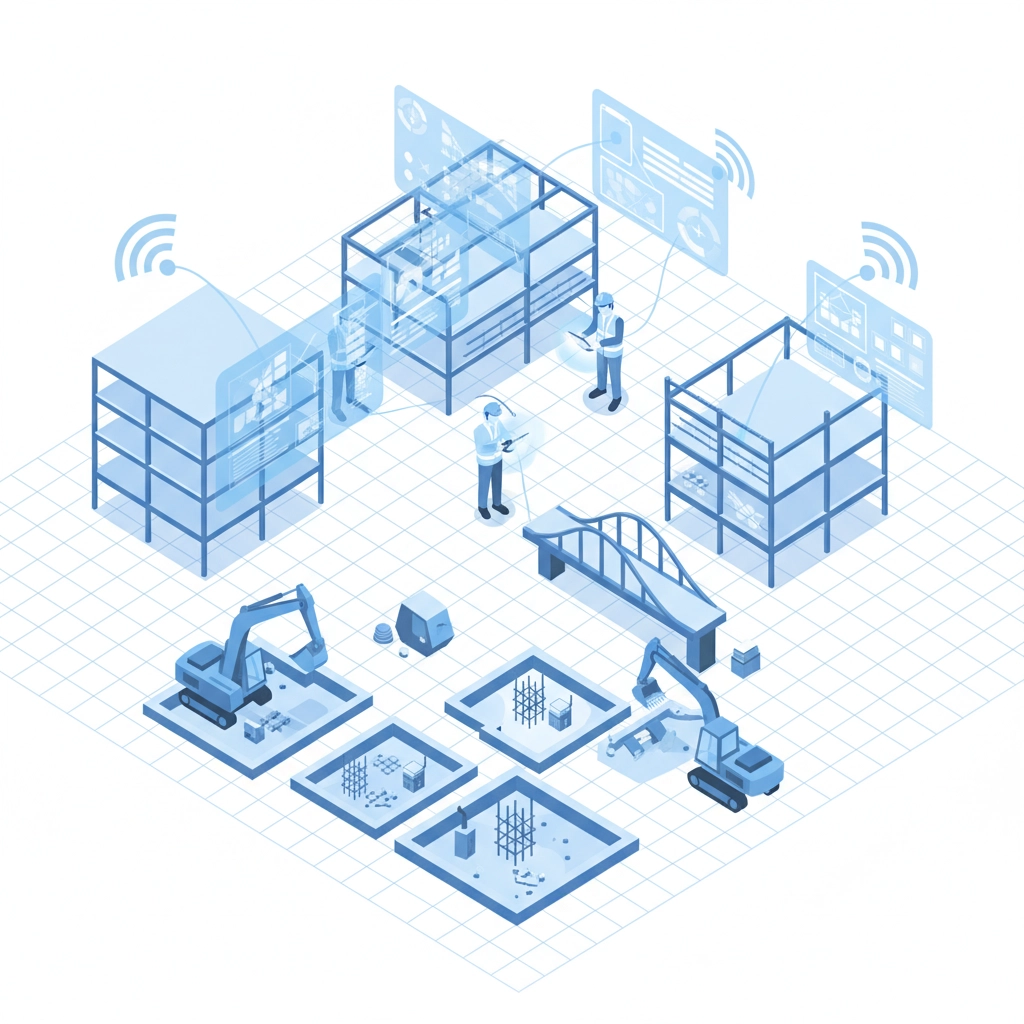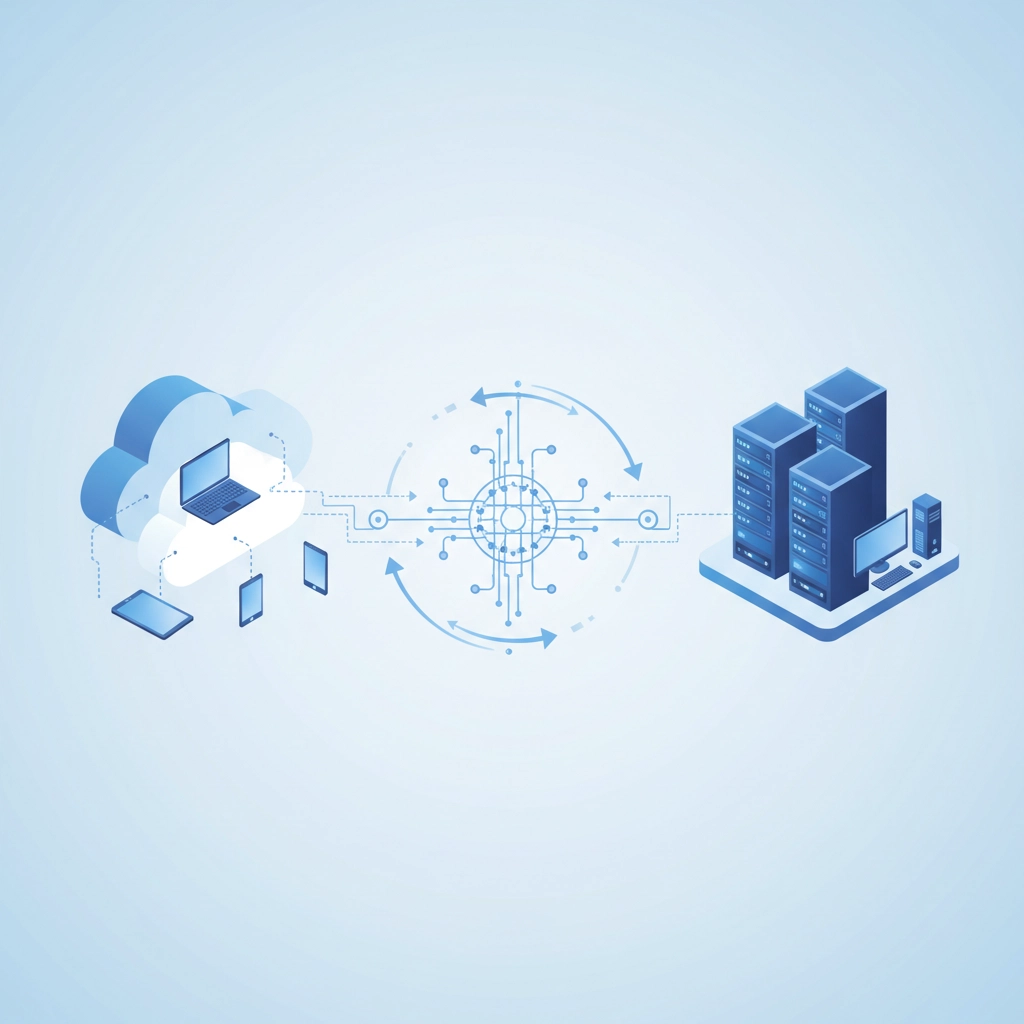Cloud-First Construction Vs Traditional Systems: Which Is Better For Your Infrastructure Projects?
- Oliver Clayton
- 4 days ago
- 5 min read
The construction industry is at a crossroads. Digital transformation has fundamentally changed how infrastructure projects are planned, managed, and executed. At the heart of this evolution lies a critical decision that every construction business must make: should you embrace cloud-first construction management systems or stick with traditional on-premise solutions?
This choice isn't just about technology: it's about your project's future success, operational efficiency, and competitive advantage. Both approaches offer distinct benefits and trade-offs that can significantly impact your bottom line and project outcomes.
Understanding Cloud-First Construction Solutions
Cloud-first construction systems represent the modern approach to project management, where all your data, applications, and workflows live in the cloud rather than on physical servers at your office.

The Core Advantages of Cloud Systems
Unmatched Scalability and Flexibility
Cloud solutions excel at adapting to your project demands without massive capital investment. Need to onboard 50 new users for a major infrastructure project? Done in minutes, not weeks. Scaling down after project completion? Equally seamless. This elasticity ensures you only pay for what you actually use.
Real-Time Collaboration Across Any Distance
Modern infrastructure projects often span multiple locations with teams working across different time zones. Cloud systems enable instant access to the latest project data, drawings, and documentation from any device with internet connectivity. Site managers in Manchester can collaborate seamlessly with architects in London and suppliers in Birmingham: all viewing the same real-time information.
Lower Upfront Investment
Traditional systems require substantial capital expenditure for servers, networking equipment, and IT infrastructure setup. Cloud solutions typically require only modest setup fees followed by predictable monthly subscriptions. This approach preserves cash flow for actual construction work rather than IT infrastructure.
Automatic Maintenance and Updates
Your cloud provider handles all system maintenance, security patches, and feature updates automatically. No more weekend maintenance windows or delayed project timelines due to system downtime. Your teams always access the latest features without internal IT involvement.
Cloud System Considerations
Long-term Subscription Costs
While initial costs are lower, cumulative subscription fees can exceed traditional system ownership costs over extended periods. Organizations planning decade-plus system usage should carefully calculate total cost of ownership.
Internet Dependency
Cloud access requires reliable internet connectivity. Poor connections can limit functionality, and complete outages prevent access to critical project data. However, most modern cloud systems offer offline capabilities for essential functions.
Traditional On-Premise Systems: The Established Approach
On-premise systems house all software, data, and applications on servers physically located at your business premises. Your IT team maintains complete control over every aspect of the system.

Traditional System Strengths
Complete Control and Customization
On-premise solutions offer unlimited customization possibilities. Your development team can modify workflows, create custom reports, and integrate specialized equipment without vendor constraints. This flexibility proves invaluable for organizations with unique operational requirements.
Data Sovereignty and Security Control
Your organization maintains direct control over all construction data, client information, and proprietary processes. This control addresses compliance requirements and provides peace of mind for handling sensitive project information.
Offline Accessibility
On-premise systems remain fully functional regardless of internet connectivity. Remote construction sites with unreliable connectivity can continue operations without interruption. This reliability proves crucial for time-sensitive infrastructure projects.
Potential Long-term Cost Savings
Organizations planning extensive system usage may find on-premise solutions more economical over time. After initial investment, ongoing costs mainly involve maintenance and occasional upgrades rather than continuous subscription payments.
Traditional System Challenges
Substantial Initial Investment
On-premise implementations require significant upfront capital for servers, networking equipment, software licenses, and skilled IT personnel. This investment can strain cash flow, particularly for smaller construction firms.
Scalability Limitations
Adding capacity requires manual hardware procurement, installation, and configuration. This process can take weeks or months, potentially delaying project starts or limiting growth opportunities.
Internal IT Burden
Your organization bears complete responsibility for system maintenance, security updates, backup procedures, and troubleshooting. This responsibility requires dedicated IT staff and ongoing training investment.
Head-to-Head Comparison

Cost Analysis
Initial Investment:
Cloud: Minimal setup fees plus monthly subscriptions
Traditional: High upfront hardware and infrastructure costs
Operational Costs:
Cloud: Predictable monthly fees, included maintenance and support
Traditional: Variable maintenance costs, internal IT salaries, upgrade expenses
Long-term Financial Impact:
Cloud: Higher cumulative costs for extended usage periods
Traditional: Lower total cost for organizations using systems 7+ years
Operational Efficiency
Deployment Speed:
Cloud: Weeks to months for full implementation
Traditional: Months to over a year for complex deployments
Scalability:
Cloud: Instant scaling up or down based on project needs
Traditional: Manual scaling requiring IT planning and implementation
Collaboration:
Cloud: Seamless remote access and real-time collaboration
Traditional: Limited remote capabilities without additional infrastructure
Security and Control
Recent data indicates cloud systems experienced 24% of security breaches compared to 70% for on-premise systems, suggesting improved cloud security measures. However, on-premise systems offer direct control over security protocols and data handling procedures.
Making the Right Choice for Your Projects

Choose Cloud-First When You Need:
Multi-Location Project Coordination
Infrastructure projects spanning multiple sites benefit enormously from cloud accessibility. Project managers, site supervisors, architects, and suppliers can access current information regardless of location, enabling better decision-making and coordination.
Rapid Growth or Scaling
Construction firms experiencing growth or taking on increasingly complex projects need infrastructure that expands without IT bottlenecks. Cloud solutions accommodate rapid team expansion and project scope changes seamlessly.
Limited IT Resources
Organizations without established IT departments should avoid the operational burden of maintaining complex on-premise systems. Cloud providers offer professional-grade infrastructure management without internal expertise requirements.
Integrated Technology Ecosystems
Modern construction operations benefit from integrated software combining project management, accounting, payroll, estimating, and compliance tracking. Cloud platforms facilitate seamless integration across multiple applications with automatic data synchronization.
Choose Traditional Systems When You Require:
Complete Data Control
Organizations handling highly sensitive information or facing strict regulatory requirements benefit from maintaining direct data control. Some compliance frameworks specifically require on-premise data storage.
Existing Infrastructure Investment
Companies with significant existing hardware, established IT departments, and proven systems can leverage on-premise solutions cost-effectively without additional infrastructure investment.
Offline Operation Requirements
Projects in remote locations with unreliable internet connectivity require systems that function independently. Traditional systems ensure uninterrupted access to critical information regardless of connectivity issues.
Extensive Customization Needs
Organizations with unique operational processes requiring significant customization beyond standard vendor capabilities should consider on-premise solutions for unlimited modification flexibility.
The Hybrid Approach: Best of Both Worlds
Many successful construction organizations adopt hybrid strategies combining cloud and traditional elements. This approach might involve cloud-based project collaboration tools alongside on-premise financial systems, or cloud storage with local application processing.

Hybrid implementations require careful planning but can provide optimal flexibility for complex organizational needs. They allow organizations to leverage cloud benefits for collaboration and scalability while maintaining control over critical or sensitive systems.
Industry Trends and Future Considerations
The construction industry increasingly adopts cloud-first approaches as digital transformation accelerates. Cloud adoption enables integration with emerging technologies like IoT sensors, AI-powered analytics, and mobile-first workflows that are becoming industry standards.
However, successful digital transformation depends on choosing solutions aligned with your specific project requirements, existing infrastructure, team capabilities, and long-term business objectives rather than simply following industry trends.
Conclusion
Both cloud-first and traditional systems can successfully support infrastructure projects when properly matched to organizational needs. Cloud solutions excel at enabling collaboration, scaling efficiently, and reducing IT burden, making them ideal for growing organizations and multi-location projects. Traditional systems provide complete control, extensive customization, and potentially lower long-term costs for established organizations with specific requirements.
The decision ultimately depends on your project complexity, existing IT infrastructure, budget constraints, team distribution, and data sensitivity requirements. Consider booking a consultation to evaluate how different approaches might support your specific infrastructure project needs.
Success in modern construction requires choosing technology that enhances rather than hinders your operations. Whether cloud-first, traditional, or hybrid, the right system should streamline workflows, improve collaboration, and ultimately deliver better project outcomes for your clients and stakeholders.

Comments